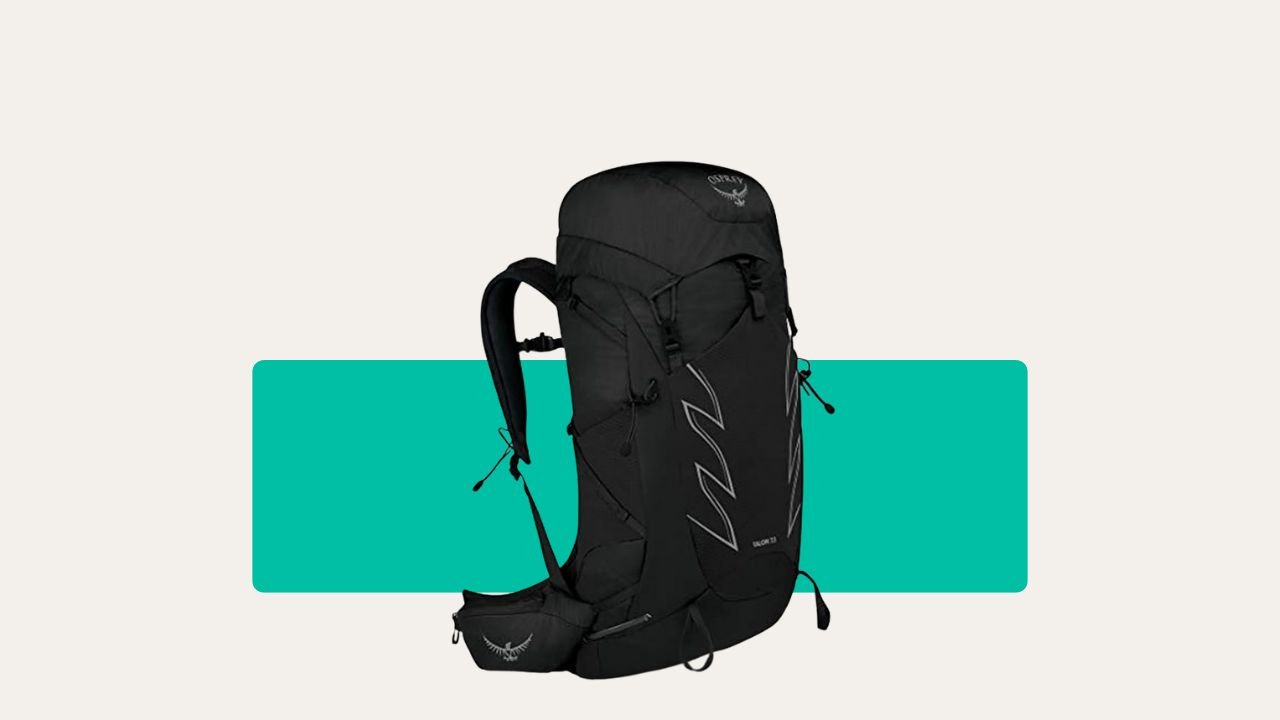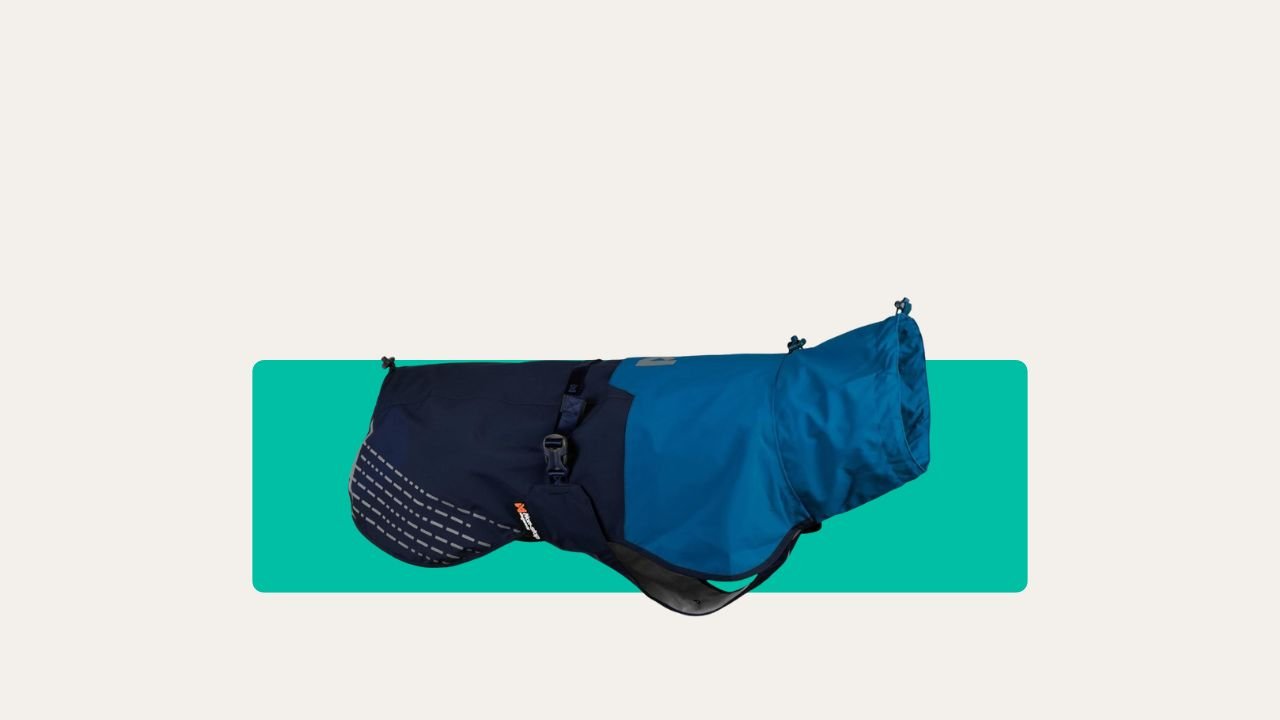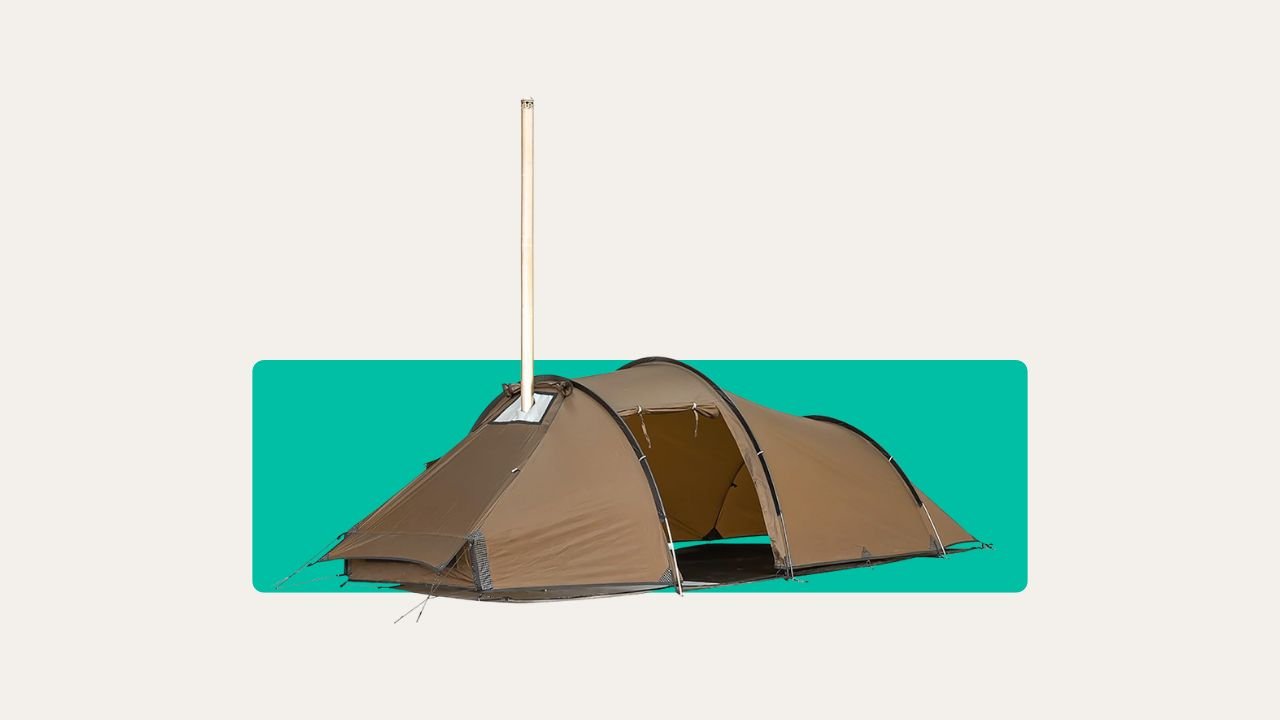Let’s be honest – camping in cold weather is no joke. One minute you’re toasting marshmallows, the next you’re shivering like a leaf because your clothes couldn’t keep up. That’s why a solid base layer is important if you love camping outside in the cold.
Base layers are not just another bit of gear; they are the secret weapon that keeps you warm, dry, and smiling through frosty mornings and snowy trails.
I’ve spent years braving chilly nights in the mountains and early starts in damp forests. Trust me, once you’ve felt that ice-cold air creeping down your back at 2 am, you’ll really appreciate a base layer that actually does its job.
In this guide, I’ll break down the best base layers and thermal wear I’ve used or tested on the road, so you can gear up smart and focus on the fun part – getting out there and exploring.
What base layers actually do?
A base layer is up close and personal. Think of it as your second skin. It’s the first thing you put on before heading out into the cold, and it plays a bigger role than most people realise.
A good base layer helps keep you warm by trapping a thin layer of body heat close to your skin. But just as important, it moves sweat away from your body so you don’t end up feeling damp and chilly after a bit of hiking or setting up camp.
When you’re outdoors in low temperatures, staying dry is just as important as staying warm. The moment sweat starts to cling to your skin, it can quickly make you feel colder than you should. With a good base layer, sweat gets shifted outwards where it can evaporate.
It also holds a skinny pocket of warm air around your body, which works like thermal bubble wrap. If you get the wrong layer – say, cotton – you’ll soak, chill, and spend the night miserable. Simple as that.
The Best Materials: Merino Wool vs. Synthetic Fabrics
Here’s where a lot of folks trip up. You spot the word “thermal” on a label and think it’ll do the trick. But the truth is, not all fabrics are made equal when it comes to staying warm and dry out in the wild.
Let’s start with Merino wool. This stuff is the real deal. Soft on the skin, not the least bit itchy, and somehow still warm even when damp – honestly, it’s like nature’s own high-tech fabric.
Merino is brilliant at regulating body temperature, which means you won’t overheat when hiking or freeze when you stop moving. Plus, it’s odour-resistant. I’ve worn mine for several days straight on Dartmoor hikes, and let’s just say, nobody ran away from me at camp.
Now, onto synthetic fabrics like polyester. They’re cheaper, dry super fast, and tend to hold up well over time – great if you’re on a tight budget or doing more intense activities. Many synthetics are designed to wick sweat and boost airflow, which helps on those more active days. But they don’t hide smells too well. And if you get soaked, they can feel a bit sticky and cold after a while.
Oh, and a quick heads-up: skip cotton. It might feel cosy at first, but once it’s wet, it’s about as useful as a sponge in your sleeping bag. Leave it at home.
Choosing a Base Layer: What The Weights Actually Mean
Most brands will push “lightweight,” “midweight,” and “heavyweight.” Here’s what those terms mean for real-world camping:
Lightweight (120-185gsm): Good for mild British cold or mad dashes up hills. Wicks well, not much insulation, so think late autumn or moving about all day.
Midweight (200-260gsm): This is the workhorse. Warm, but not a sweat box. My go-to for most UK winters and campfire evenings when you’re not running but not freezing solid either.
Heavyweight (260+gsm): This offers pure insulation. Bring these for January wild camps, long nights, or if you feel the cold badly. You lose breathability, but nothing beats it when you’re hunkering down in Arctic wind.
The bottom line? Pick your weight depending on what you’re doing (moving or sitting), where you’re camping, and your cold tolerance. It’s not one-size-fits-all.
Best Base Layer and Thermal Wear: A Quick Look
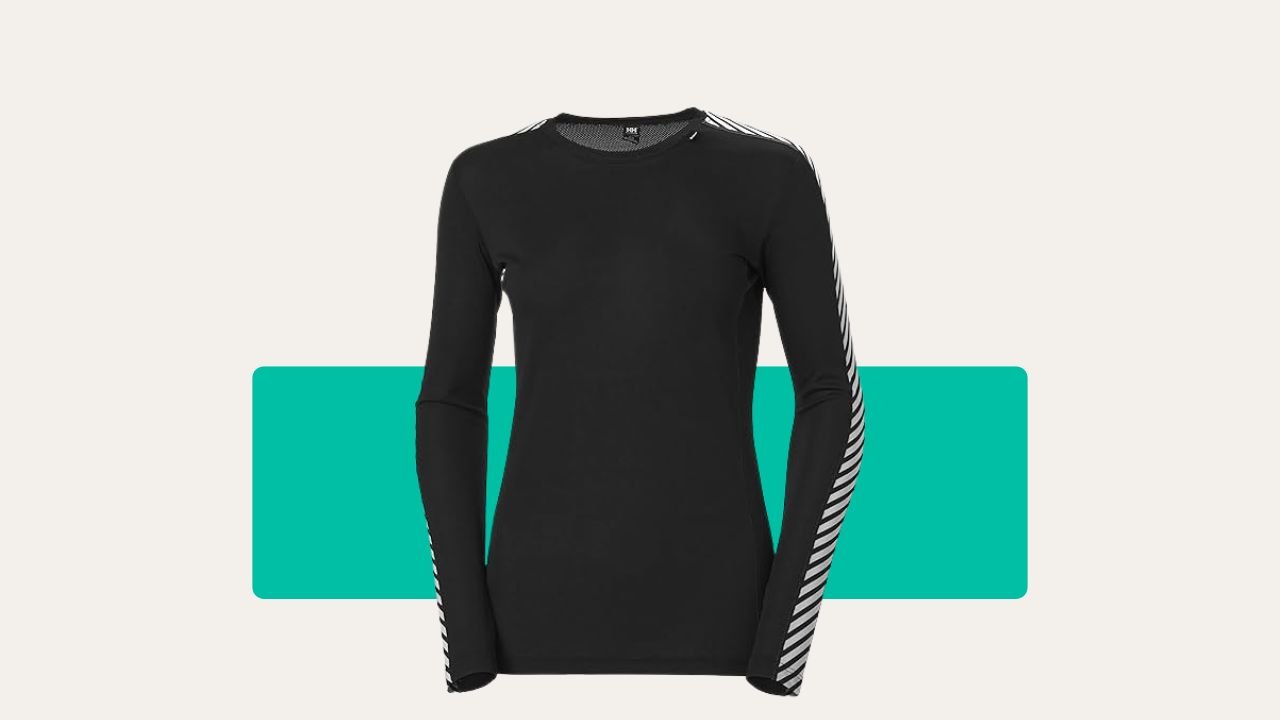
Helly Hansen Crew Top
Material: 100% Polypropylene
Best For: All-round cold weather use
Pros: Breathable, comfy, lightweight
Cons: Sizing can be tricky
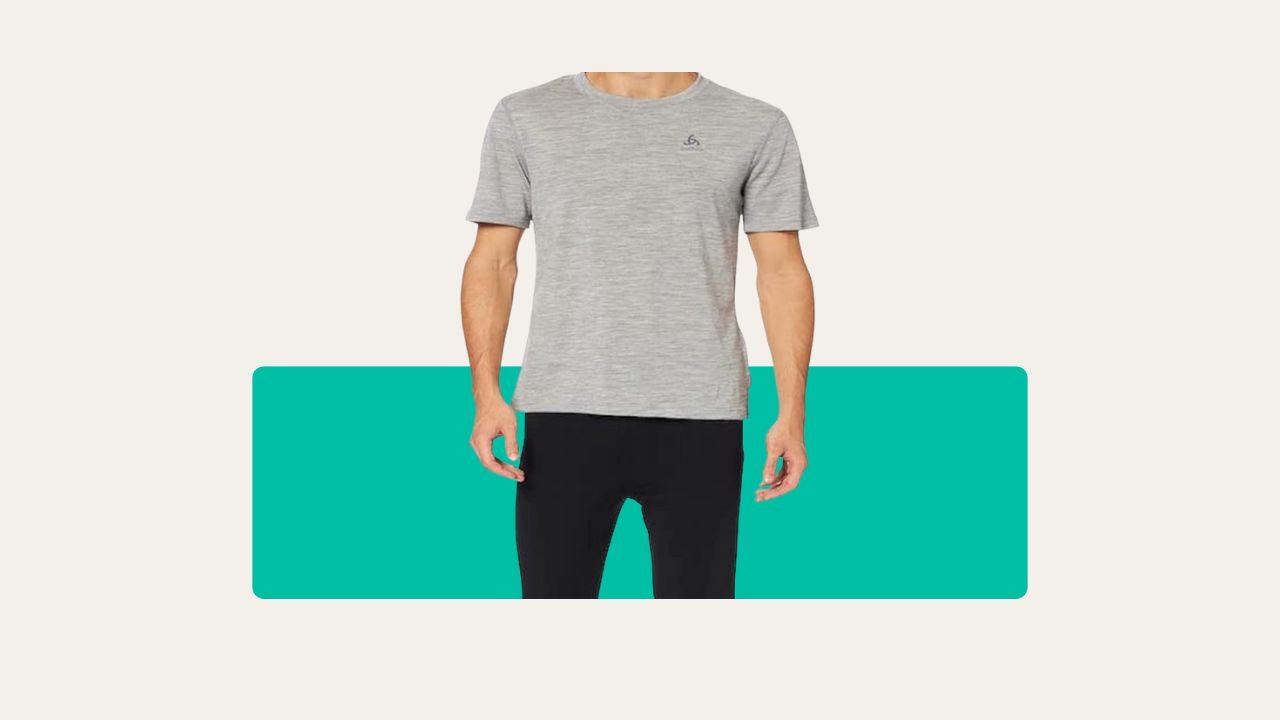
Odlo Merino Warm Crew
Material: 17.5-micron Merino Wool
Best For: Hiking, running, climbing
Pros: Soft feel, stylish, odour-resistant
Cons: Handwash only, may stretch after washing

Forclaz Merino Base Layer
Material: 89% Merino Wool
Best For: Winter mountaineering & snow trips
Pros: Warm, wicks well, zip venting
Cons: No women’s sizes, may lose shape
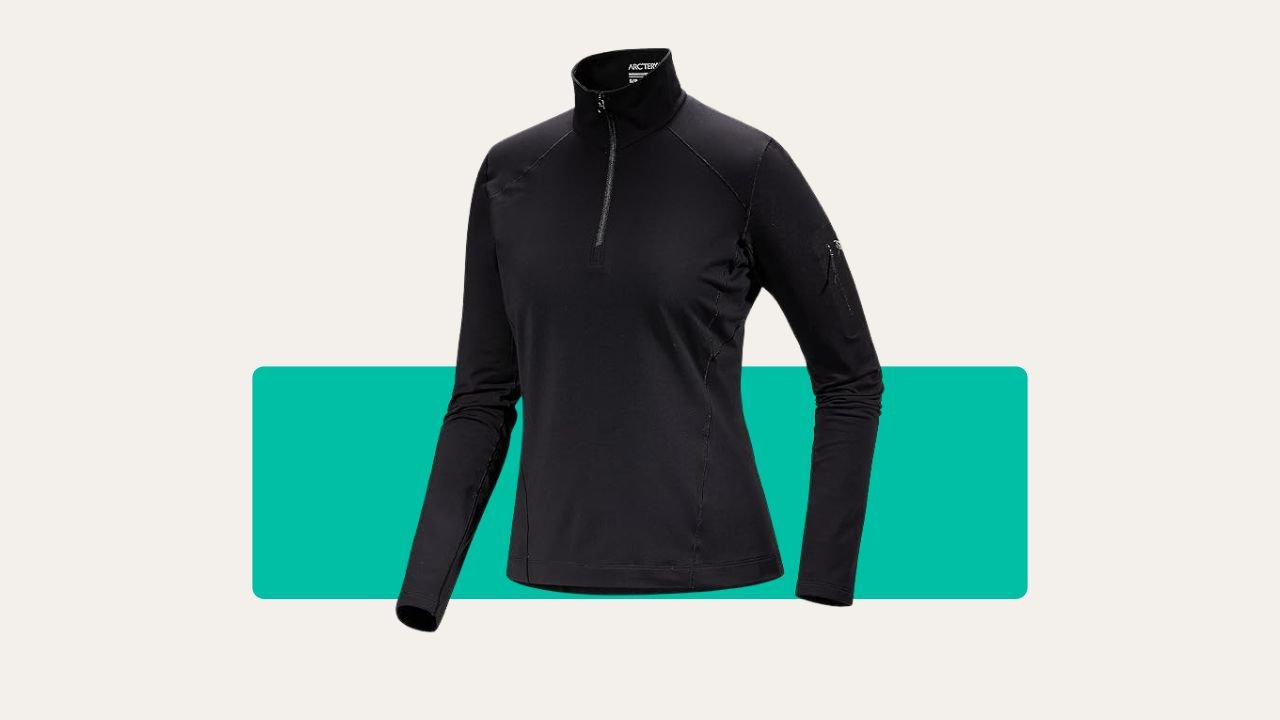
Arc’teryx Rho AR Women’s Zip Neck
Material: Synthetic blend
Best For: Cold weather and winter sports
Pros: Super soft, warm, high quality
Cons: A bit thick for a true base layer
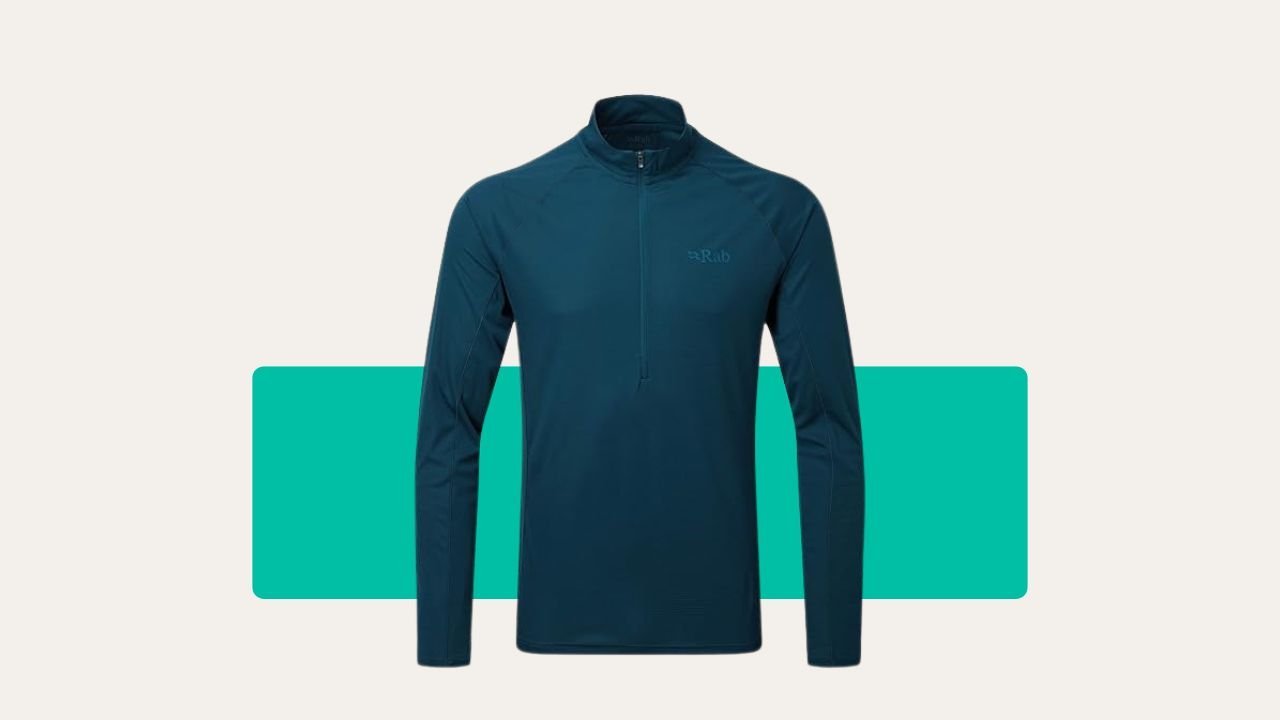
Rab Pulse LS Zip
Material: Lightweight Lycra w/ Polygiene
Best For: High-exertion activities & layering
Pros: Lightweight, odour control, great value
Cons: Few downsides—solid all-rounder
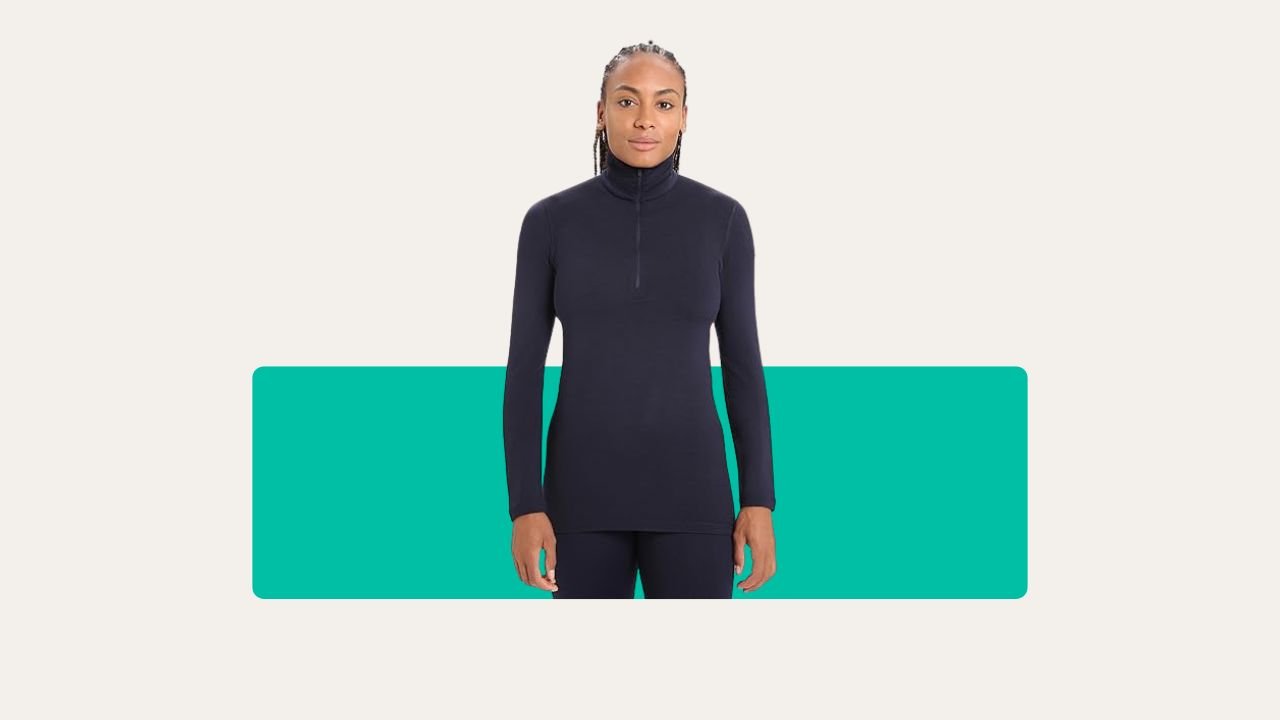
Icebreaker Merino 260 Zip Neck (Women’s)
Material: Merino Wool
Best For: Hiking, snow sports, daily wear
Pros: Excellent thermal control, stylish, odour-resistant
Cons: Tight fit—consider ordering 2 sizes
Best Base Layer for Cold Weather Camping
There’s no shortage of base layers out there, but not all of them hold up when the cold really kicks in. Below are a few that I’ve either worn myself or tested alongside other campers over the years. Each one brings something different to the table, but they all do what matters most: keep you warm, dry, and ready for whatever the trail throws at you.
1. Helly Hansen Base Layer Crew Top
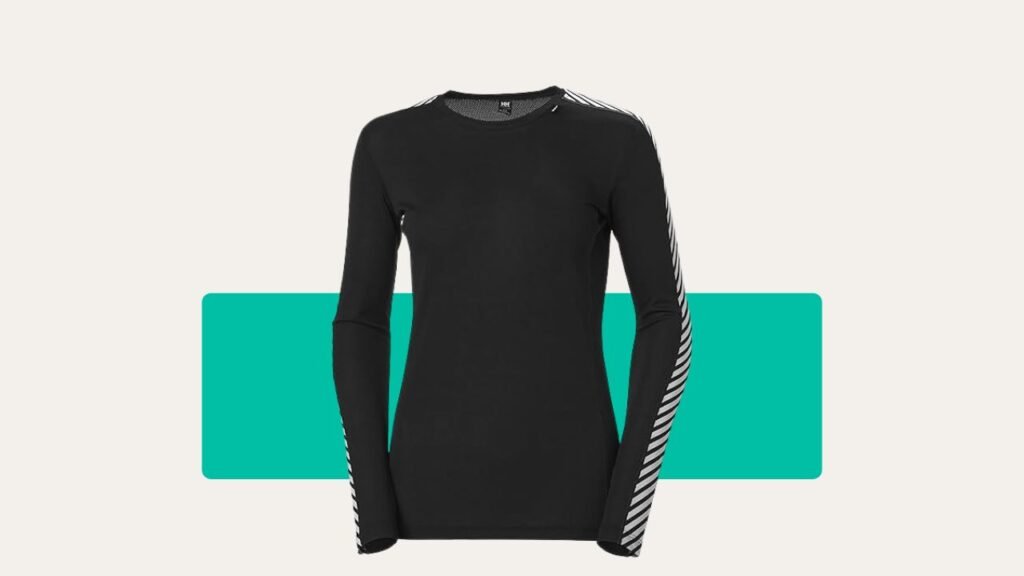
Helly Hansen has been around the block when it comes to outdoor gear, and this base layer shows why they’re still a top pick for many. Made from 100% polypropylene, it’s ridiculously lightweight and breathable. You can practically forget you’re wearing it until you notice you’re still warm and dry while others are freezing up.
I’ve always been a fan of that classic Helly striped sleeve. It gives it a proper alpine vibe. It fits snugly, almost like it was tailored for your torso. The only thing that split opinions in our group was the crew neck. I personally like it because it traps heat better, but I get why some might miss a zip for quick venting.
Good news? Helly makes tons of options with different neck styles, so there’s likely one out there for you.
Pros
- Breathable fabric
- Comfortable and lightweight
- Easy to wash and quick to dry
Cons
- Fit can be tricky – sizing runs a bit odd
2. Odlo Merino Warm Crew
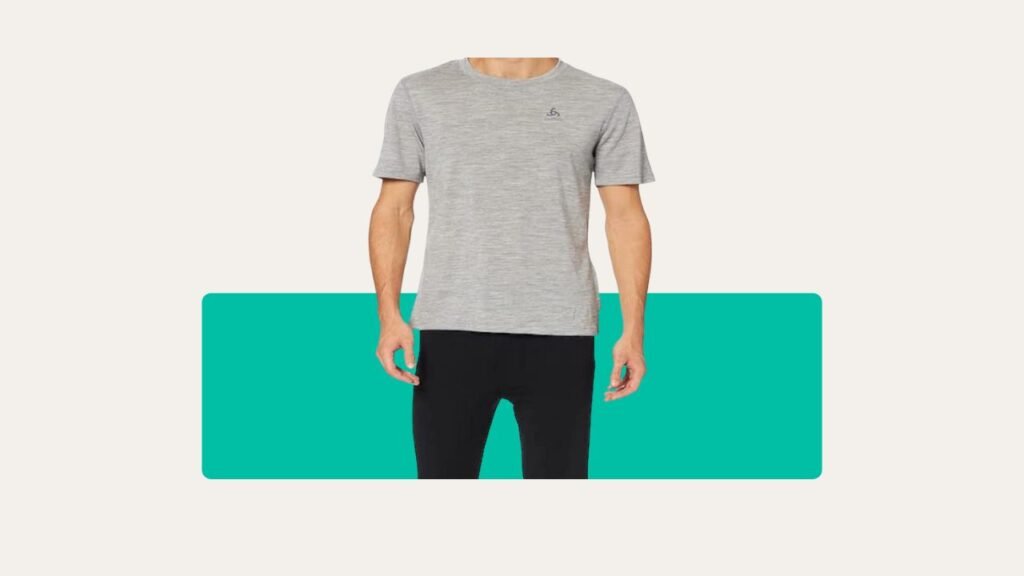
If you’re looking for something that feels luxurious against the skin, Odlo’s Merino Warm Crew might just be it. This one’s made from ultra-fine 17.5-micron merino wool – so smooth you’d think it was silk. It’s the kind of top you can wear for hours (or days) without it itching, chafing, or stinking up your tent.
Out on the trails, I found it performed beautifully, whether I was scrambling up rocky hills or just sitting around the fire. The crew neck design didn’t bother me here either, especially since there’s no zip to rub or catch. It’s a dependable all-rounder and looks good too.
Pros
- Super soft, no-itch merino wool
- Stylish look with solid performance
- Naturally resists odour and wicks sweat
- Great for a range of activities
Cons
- Needs hand washing
- Fabric can stretch over time
3. Forclaz Merino Wool Base Layer (Decathlon)

This is the one I usually pull out when the forecast promises snow, not sunshine. With 89% merino wool, it’s built for real cold – and it shows. It’s a bit heavier than the others, but it keeps you warm like a champ. I especially like the zipped neck. It runs deep enough to let in air when you’re heating up, but keeps things snug when zipped up.
During a windy camp in the Peak District, I relied on this one, and it never let me down. It wicks sweat like a sponge and dries faster than you'd expect for something this thick. For the price, you’re getting serious performance. Just keep in mind, it might be too warm for anything other than proper cold-weather use.
Pros
- Heavy-duty warmth for cold climates
- Brilliant moisture-wicking
- Long zip for easy temperature control
- Minimal seams = less irritation
Cons
- Not available in women’s sizes
- May lose shape after repeated washing
4. Arc'teryx Rho AR Women's Zip Neck
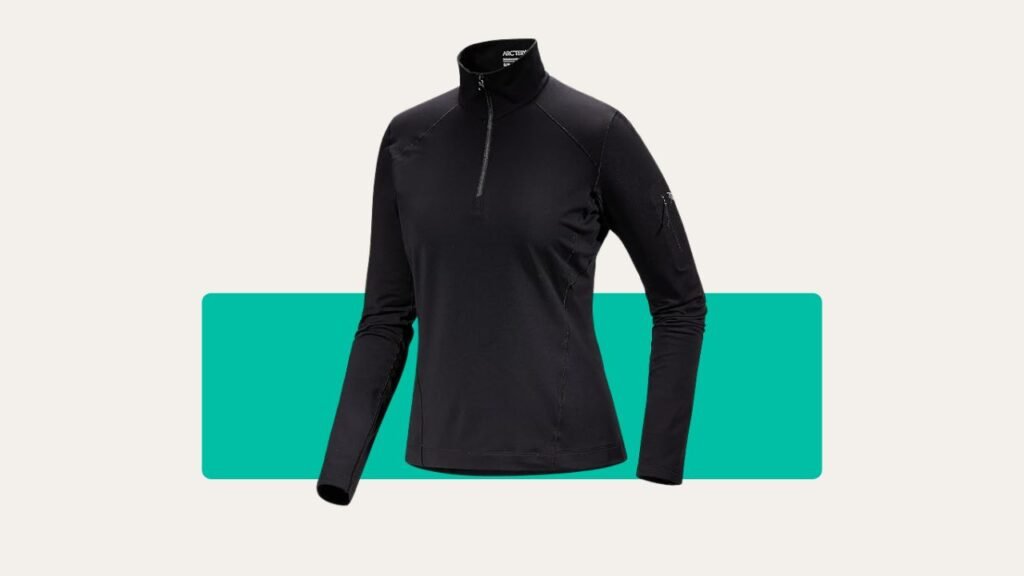
If you’re heading out into proper cold and want a base layer that feels like a warm hug, the Rho AR is it. Arc’teryx doesn’t mess around when it comes to quality, and this women’s zip neck proves it. The inside feels rich – like, luxuriously soft – and it wraps around your body like it’s meant to be there.
It’s warm – really warm. Honestly, you could argue it’s almost crossing into mid-layer territory, especially if you’re used to thinner base layers. But when it’s freezing out, that extra thickness is a blessing. The zip at the neck helps let out steam when you’re on the move, and the cut is flattering without feeling tight or clingy.
Pros
- Incredibly soft and warm
- Ideal for skiing, snowshoeing, and winter hiking
- High-quality build that’ll last years
Cons
- On the thicker side for a base layer
5. Rab Men's Pulse LS Zip Baselayer Top
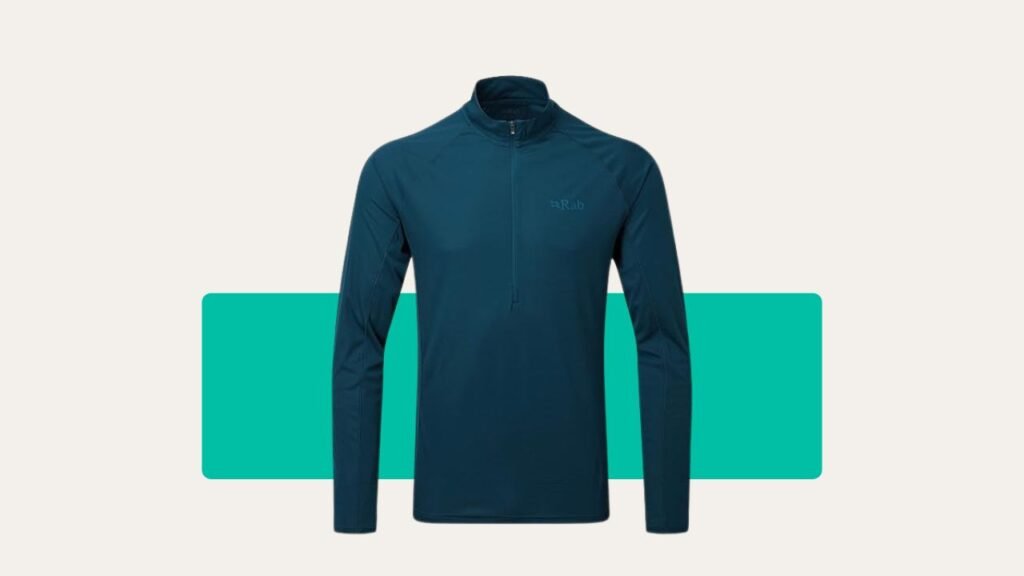
Now this one caught me off guard – In a good way. Rab is usually on the pricier end, so finding the Pulse LS Zip at a great price and with solid performance? Big win. It’s super lightweight (just 117g), stretches well, and feels like a second skin. Perfect when you’re layering up for an active day out.
The breathable Lycra blend is treated with Polygiene, which basically means it won’t stink after a couple of sweaty hikes. That was a major plus. I’ve used it on long treks where changing clothes isn’t an option, and it stayed surprisingly fresh. Add in a deep chest zip and smooth, low-bulk seams? You’ve got a versatile all-rounder that ticks all the right boxes.
Pros
- Ultra-light and breathable
- Great value for money
- Odour control built-in
- Doesn’t rub or chafe
Cons
- Honestly, not much to fault – it’s just a great bit of kit
6. Icebreaker Merino 260 Winter Zone Women's L/S Zip Neck
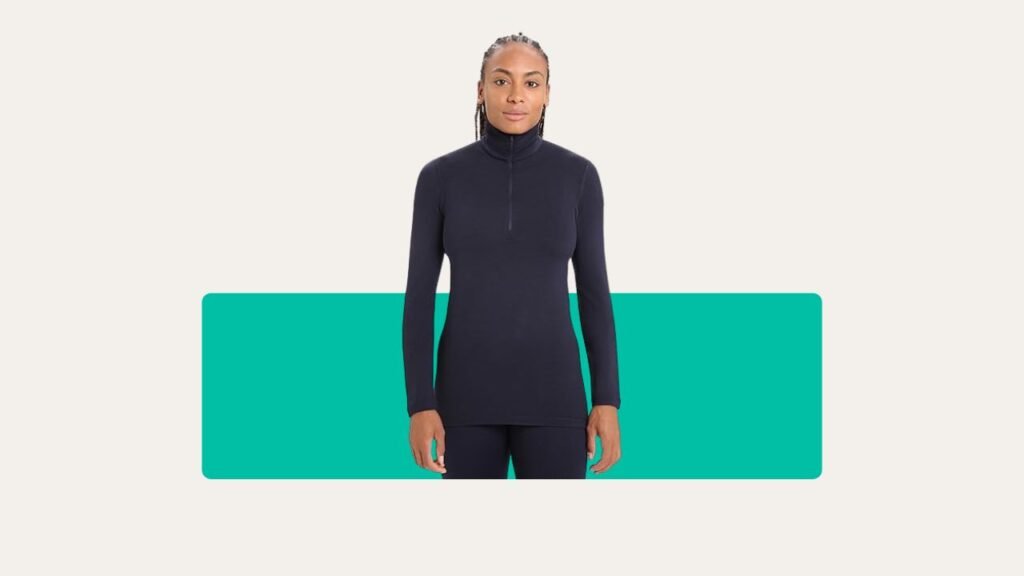
If you’re after something high-end that performs just as good as it looks, this one’s a strong contender. The Icebreaker Merino 260 isn’t cheap, but it is the kind of base layer that’ll see you through years of winter walks, ski trips, and frosty morning hikes.
My wife, Ali, swears by hers, especially on a bitter January trail in North Wales. It kept her warm but never sweaty, thanks to the clever merino blend and the handy zip neck that let her cool off on climbs. The fit is snug and supportive, which makes it feel more tailored than bulky, and the natural odour resistance is just the cherry on top.
Pros
- Excellent thermal regulation
- Flattering fit with zip for ventilation
- Smells fresh even after heavy use
- Great for layering under jackets
Cons
- Fit runs small
How to Build a Reliable Layering System for Camping?
Here’s the simple truth: the secret to staying warm out there isn’t just one magical jacket. It’s layering. A good system keeps you dry, traps heat, and lets you adapt as the weather changes.
I’ve had plenty of wild camps in soggy, windswept spots where the right layers made all the difference. And yep, I’ve also messed it up (more on that in a sec).
Let me break it down:
- Base Layer – This goes on first and stays on till the bitter end. Its job is to pull sweat off your skin and lock in body heat. Go with merino wool or a solid synthetic like the ones we talked about above.
- Mid Layer – This is your heat trap. Fleece, softshell, or even a lightweight down jacket can work here. It adds insulation and helps shift moisture out toward your outer layer.
- Outer Layer – Your shield. A proper waterproof, windproof jacket is a must. When the wind starts howling and rain comes in sideways, this layer is what stands between you and a miserable hike back to camp.
I’ll never forget that one trip to the Lake District when I forgot my mid layer. The temperature dropped, the wind picked up, and there I was, wrapped in a base layer and a raincoat, shivering like a rookie and eyeing the dog’s coat with envy.
Lesson learned: don’t skip a layer, and always bring a spare if you’ve got the room.
Conclusion: Get Your Base Layer Right, Enjoy the Rest
I’ll say it straight – skimp on your base layer and you risk the whole trip. Pack quality, fit, and weight that matches your plan. Stay snug and dry, and you’ll enjoy everything – from sunrise brews to stormy overnights.
Remember, misery is optional. I learned this after too many nights shivering in cheap kit. You don’t have to. Get your base sorted, and you’ll camp warm, confident, and ready for whatever the UK throws your way.
Got a favourite I’ve missed, or a horror story to share? Drop it in the comments – I always want to hear from fellow campers who’ve survived the chill.

